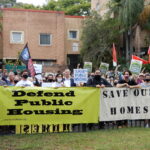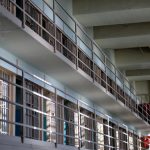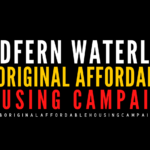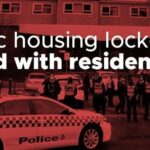The Privatising Public Housing Con: An Interview With UNSW City Future’s Dr Alistair Sisson
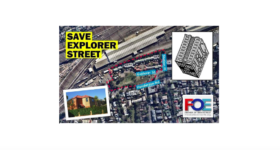
The Explorer Street public housing estate in inner city South Eveleigh is comprised of 46 one and two storey town houses built in the early 1990s. To stand in front of it, it’s hard to see why the Berejiklian government is determined to see it demolished.
In November last year, Explorer Street residents and those at the Franklyn Street public housing complex in Glebe, received notice from NSW housing minister Melinda Pavey informing them that sometime in the next couple of years, they’ll be losing their homes.
Like so many public housing estates before them, these sites are to be redeveloped under a decades-old NSW state government model that was first applied to the Minto housing estate at the turn of the century.
This model entails building private high-rise apartments upon the sites, with an included 30 percent allocation for social housing.
Despite the pelting rain on 13 February, dozens of local residents and supporters gathered at the park adjacent to the Explorer Street estate to protest the destruction of the homes and the community that’s developed around them.
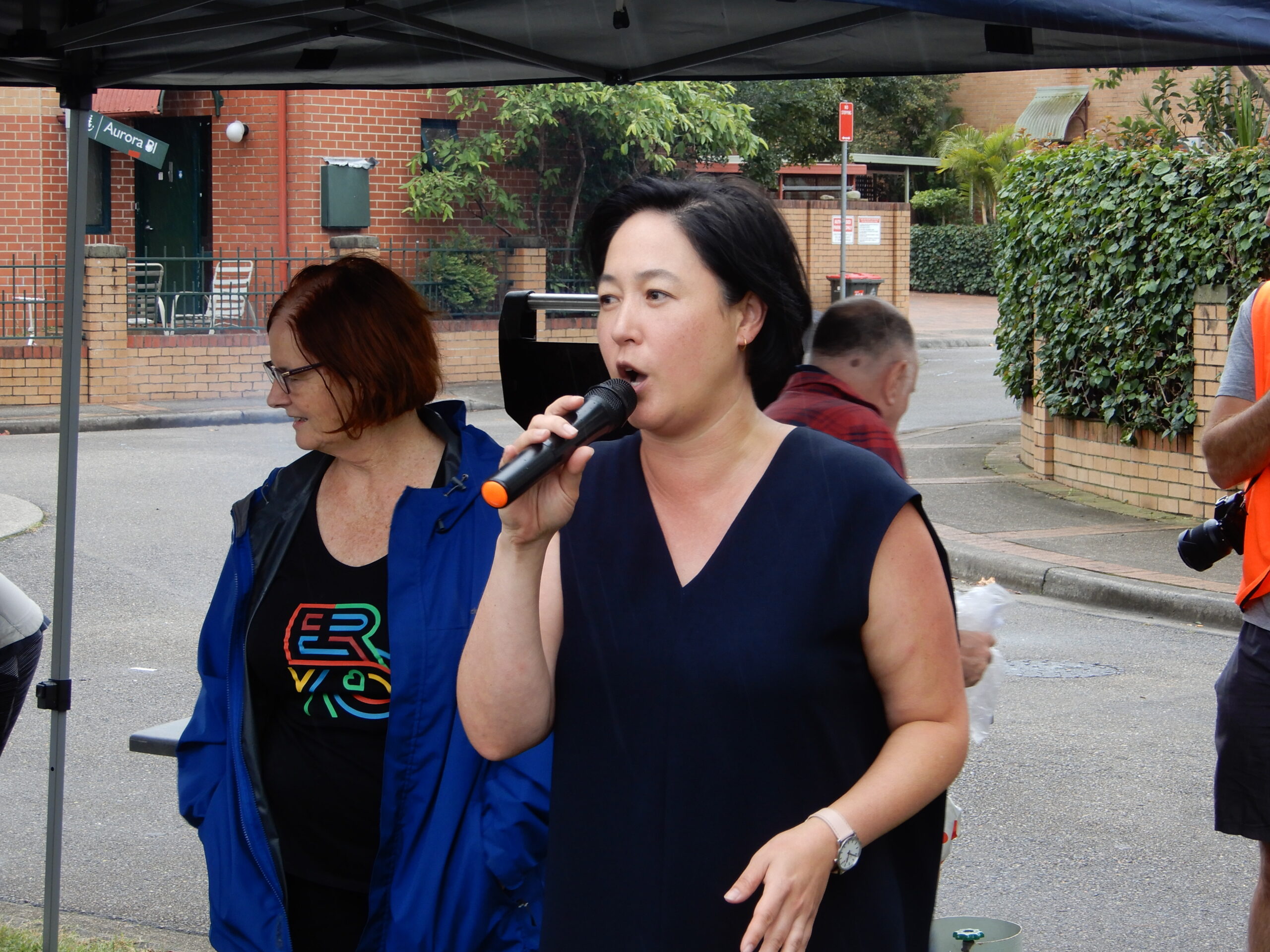
Communities desecrated
NSW Greens MP Jenny Leong stood before the crowd last Saturday and questioned “why on Earth” the Berejiklian government is proposing to destroy the Explorer Street townhouses, which are “providing affordable living for families”.
Leong pointed out that the proposed redevelopment of the public housing complex is part of the NSW Land and Housing Corporation’s Communities Plus program. Launched in 2016, this initiative has 28 redevelopment projects in its sights.
“Don’t believe the spin,” Leong said. “Communities Plus is not about communities. What it’s about is plusing the profit of their private developer mates.” She added that, at the end of the day, the plain math is that a 100 percent public housing site will be diminished to 30 percent social housing.
Friends of Erskineville secretary Andrew Chuter maintained that the Communities Plus model is based on a flawed principle because public housing can’t be funded by giving away public land.
And Chuter cited the 2020 City of Sydney Housing Audit, which “revealed that the percentage of public housing in the area is falling”.
Social, not public?
The campaign against the redevelopments at Explorer Street and Franklyn Street kicked off with the Save Our Housing rally in Glebe on 30 January.
Hands Off Glebe secretary Emily Bullock advised that despite the NSW housing minister having been on the radio the night prior suggesting that she’d consulted Franklyn Street residents, she’d done nothing of the sort.
During the rally, residents expressed their fears around what was going to happen to them if their homes are torn down. And a number of protesters raised questions as to what the 30 percent “social housing” allocation actually means in terms of it no longer being considered public housing.
Sydney Criminal Lawyers decided to consult UNSW City Futures Research Centre research associate Dr Alistair Sisson about the difference between social and public housing, how this redevelopment model has been underway for decades, and what’s in it for the state government.
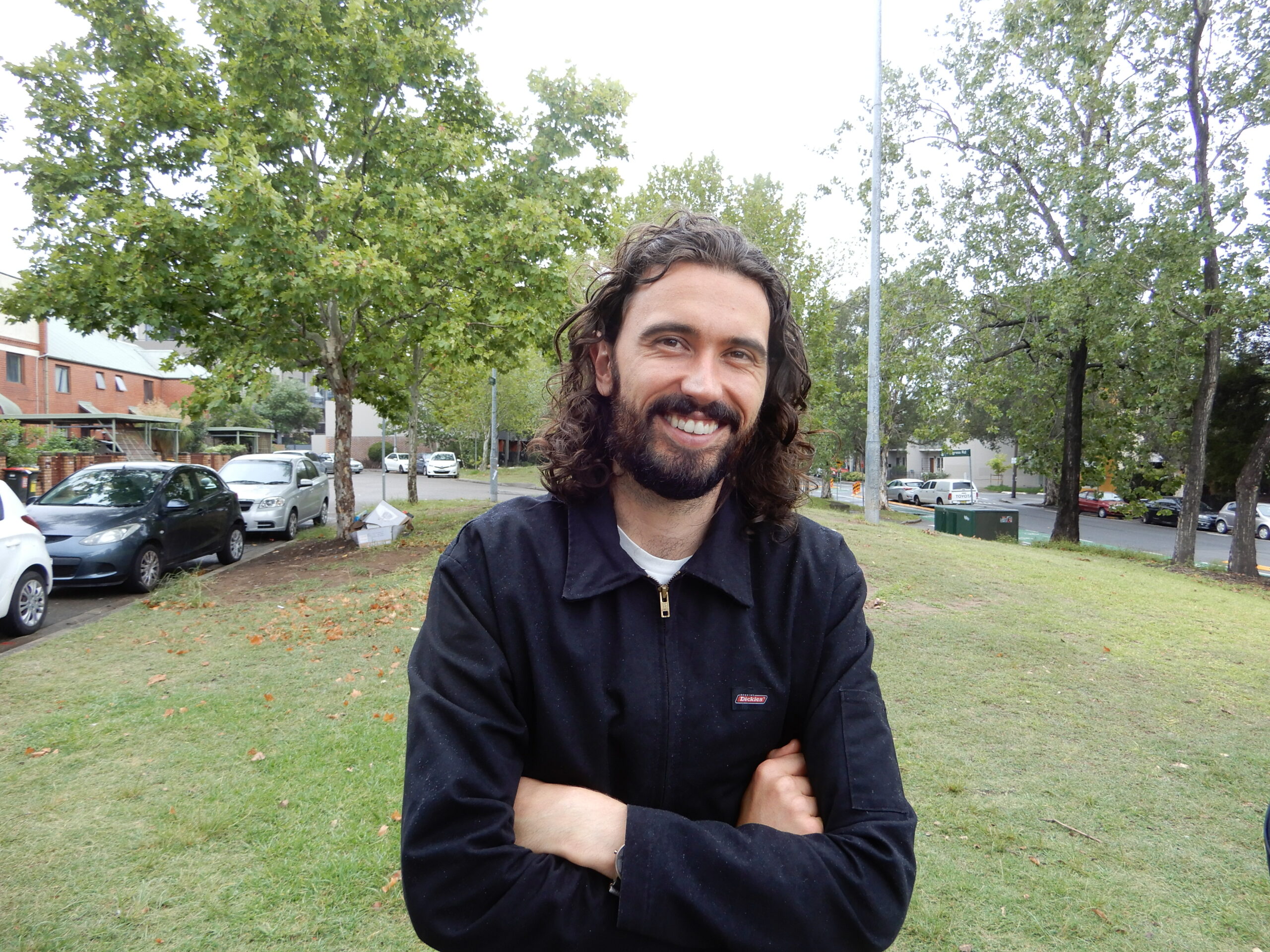
Firstly, the fight to prevent the destruction of the Franklyn Street public housing complex and the Explorer Street public estate has commenced.
The Berejiklian government has slated both for demolition and redevelopment with a 30 percent social housing component.
Some were questioning the difference between public and social housing at the initial Glebe rally. And then there’s also community housing.
Dr Sisson, can you give us a rundown on what these terms all mean?
Social housing is a catch-all term. It includes public housing, which is nonmarket housing owned and managed by the state government.
It also includes community housing. That is nonmarket housing that’s managed and sometimes owned by not-for-profits: organisations like Mission Australia, Bridge Housing and City West Housing.
These organisations aren’t in it for profit. They’re private not-for-profit entities. Sometimes they own the properties, but a lot of the time those properties are owned by the state government.
In those cases, they’re formally public housing, but the management of the tenancy is transferred to the community housing provider.
Social housing is the umbrella term. Community housing and public housing are two types of social housing.
So, when the state government indicates that the redevelopments will contain 30 percent social housing, it’s really talking about community housing?
That’s what’s expected from the Glebe development, South Eveleigh and basically all of the estate redevelopment projects that come under the Communities Plus program.
That’s the state government program involving the development of private housing and community housing mix. It involves 70 percent private housing and 30 percent community housing.
That’s what’s happening at Ivanhoe estate in Macquarie Park. It’s underway in Telopea, near Parramatta, and Riverwood. It’s what is coming to Waterloo. And that’s what the government has said it’s going to do in Glebe and South Eveleigh.
How is this policy of tearing down public housing, and rebuilding private with a 30 percent community allocation playing out?
The short answer is pretty badly for current public housing occupants. And it’s a bad deal for the public in general.
The first thing is these projects haven’t been selected based on the quality of the existing housing stock.
They’re not looking at the existing public housing estates and assessing which ones are the most deteriorated, are giving tenants the worst kind of housing experience, and thinking about how to improve them.
What they’ve been doing is strategically identifying sites that have the capacity for a large amount of private housing to be built on the land. Basically, they’re areas where there’s a higher value placed on the land.
So, Waterloo in the inner city, where there’s going to be a new metro station. Ivanhoe in Macquarie Park is near the train station. Arncliffe is another one just off the Princes Highway. And there’s Telopea as well.
They’re basically choosing high value locations where there’s public housing, so they can redevelop it at minimal cost – ideally, at no cost to the state government.
So, that’s the financial model of this program.
Property developers are obviously pleased with this model. But what’s in it for the government?
There are a number of reasons for this government approach, which has been going on for the best part of twenty years.
It started in southwest Sydney. Minto was the first estate to be redeveloped in the 70-30 model. It then moved through places like Claymore, Airds-Bradbury and Bonnyrigg.
There are three components for the thinking behind it. One of them is that they want to improve the quality of housing stock.
I’m not so cynical to think that they don’t actually care at all about the quality of public housing. Many public housing stock issues are because of neglect over decades and also a lot was built quite cheaply in the first place.
But they want to do that at no cost to the state government and they’re not getting any money from the Commonwealth.
So, they’re doing that by accessing private investment, which comes in the form of private homes being built in place of public housing.
That’s one reason. Another is that if they can transfer the tenancy off the books of the state government and onto community housing providers that means it’s a cost that they save as well.
That’s a cost that’s partly transferred to the Commonwealth government because it pays out rent assistance to these not-for-profit providers.
An important point of difference between public housing and community housing is that community housing providers get access to Commonwealth rent assistance. So, the Commonwealth government is paying some of the cost to manage the tenancies.
You won’t hear anybody from state government admitting this, but the third reason is they’re trying to capitalise on land values.
In the case of Waterloo, Glebe and south Eveleigh, in particular, they’re trying to transform these areas into higher value areas with more upmarket housing, along with more kinds of tertiary service sector employment, more office buildings and financial services.
These are areas that have gentrified dramatically over the past couple of decades and so the state government and private sector are seeing them in this light and trying to take advantage.
The influence of the property development industry, and the development lobby in NSW, is well known.
So, I’m sure that they’re getting in the ear of people within government making the decisions about where these projects will be located. They could have been eyeing off these sites for quite some time.
One final thing that politicians and public servants will say is that they’re addressing so-called concentrated disadvantage through ‘social mix’.
The idea here is that disadvantaged or marginalised people will benefit from living closer to better-off private renters and homeowners.
It’s a pretty disgusting idea, that all people need is a rich role model, and it’s been rightly criticised by researchers around Australia and the world.
In places like Glebe, Waterloo and South Eveleigh it’s particularly absurd because, as I said, those places are already gentrified, and they already have the good services and amenities that private investment is supposed to bring.
Ultimately, though, it works as a kind of cover for the other motivations that I just mentioned.
In terms of the Glebe and the Eveleigh estates, will the government oversee the building of redevelopments or is it overseen by developers? How does it all work?
As with other estates, what will happen is the NSW Land and Housing Corporation will submit a planning proposal to the council. So, in the case of Glebe, the City of Sydney.
That proposal is to rezone the site, so that the heights of the buildings can be raised. Basically, they change the kind of things that can be built on it.
Once that gets signed off on, then the project goes out to tender. For Communities Plus, this is what has happened in Ivanhoe already, and it’s about to happen with Waterloo.
Once rezoning gets approved, it goes out to tender, and the community housing providers and the property developers partner together to form a development consortium, which then pitches their plan for the site to the Land and Housing Corporation.
For example, in Ivanhoe, it was Fraser Property Australia and Mission Australia Housing. They’re the ones that are now taking charge of that redevelopment, because they were selected as the best applicants.
So, these consortiums build these developments on public land and then turn a profit from it?
The land is basically given away for free or exchanged for the development of the new social housing, which is community housing.
In most cases, as I understand it, the community housing component remains in public ownership. The community housing properties and the land that they’re on are supposed to remain public.
The remainder of the property is privatised. So, some of the land will be retained in public ownership.
And the government saves money by the fact that it’s not looking after these buildings anymore?
Yeah. That’s effectively right. They don’t have to spend as much money on tenancy management or on maintenance of the property, because that’s the responsibility of the community housing provider.
There was another site in Glebe, on Cowper Street, that was torn down about a decade ago. In your experience, what happens to residents in the interim? Do they eventually end up in the new apartments on the original site?
It’s pretty mixed. I’ve followed Waterloo closely, and also looked into Minto, Airds-Bradbury and Ivanhoe.
It’s a very difficult process for tenants. It’s long, drawn out and confusing. They’re facing the loss of their homes, and they’re communities. Some of them have lived there for decades. So, there’s a lot of anxiety, stress and a lot of fear.
The timeframes we’re talking about are really drawn out and they constantly change.
In Waterloo, relocations were first supposed to happen in late 2016. They were then delayed until early 2017 and again into late 2017, then to 2018. Right now, they still haven’t given any of the residents an indication as to when it might start to occur.
There’s this constant drawn out process of not really knowing what the future holds.
As for whether people come back to the area, that’s what’s being promised in Waterloo, Glebe and other places.
But in practice, a lot of the people in these communities are quite elderly and project timelines are very long. So, sadly, a number of them won’t see the completion of the redevelopment.
Some residents might settle into new homes elsewhere and feel like they don’t want to go back. That happened to some people who were moved out of Minto.
It’s also worth mentioning that in some of the redevelopment projects in Sydney, they end up building fewer community housing properties, than there were public housing properties in the first place.
So, it wasn’t possible for everybody to return. There were lottery systems where people were selected out of a barrel and they were the ones who were able to return.
The idea is that residents are relocated to a place of their choosing. So, if they want to be relocated in the same area, they will be. But if they want to move to a different part of the city or the state, they can do that.
The issue with that is it’s delaying the placement of the people who are currently on the public housing waiting list. It’s slowing down the allocation of public housing to people on the waiting list, because you have to relocate existing tenants.
On looking at the public housing waiting list, there appears to have been a drop of late. Is that correct?
I believe there has been some manipulation of the data going on. It’s somewhere between 50,000 and 60,000 at last count.
It hasn’t really gone down much, but the Department of Communities and Justice has adjusted the figures to exclude people who were on the waiting list but aren’t able to be placed in a house at that time.
For example, if you’re in hospital or serving a prison sentence, you might be on a public housing list, but you can’t actually be placed into a house at that moment.
There are a whole bunch of circumstances where that might be the case and it made the waiting list seem lower than it really is.
We also need to understand that there are thousands, potentially tens of thousands of people who would be eligible for public housing but haven’t applied, partly because the wait times are so long.
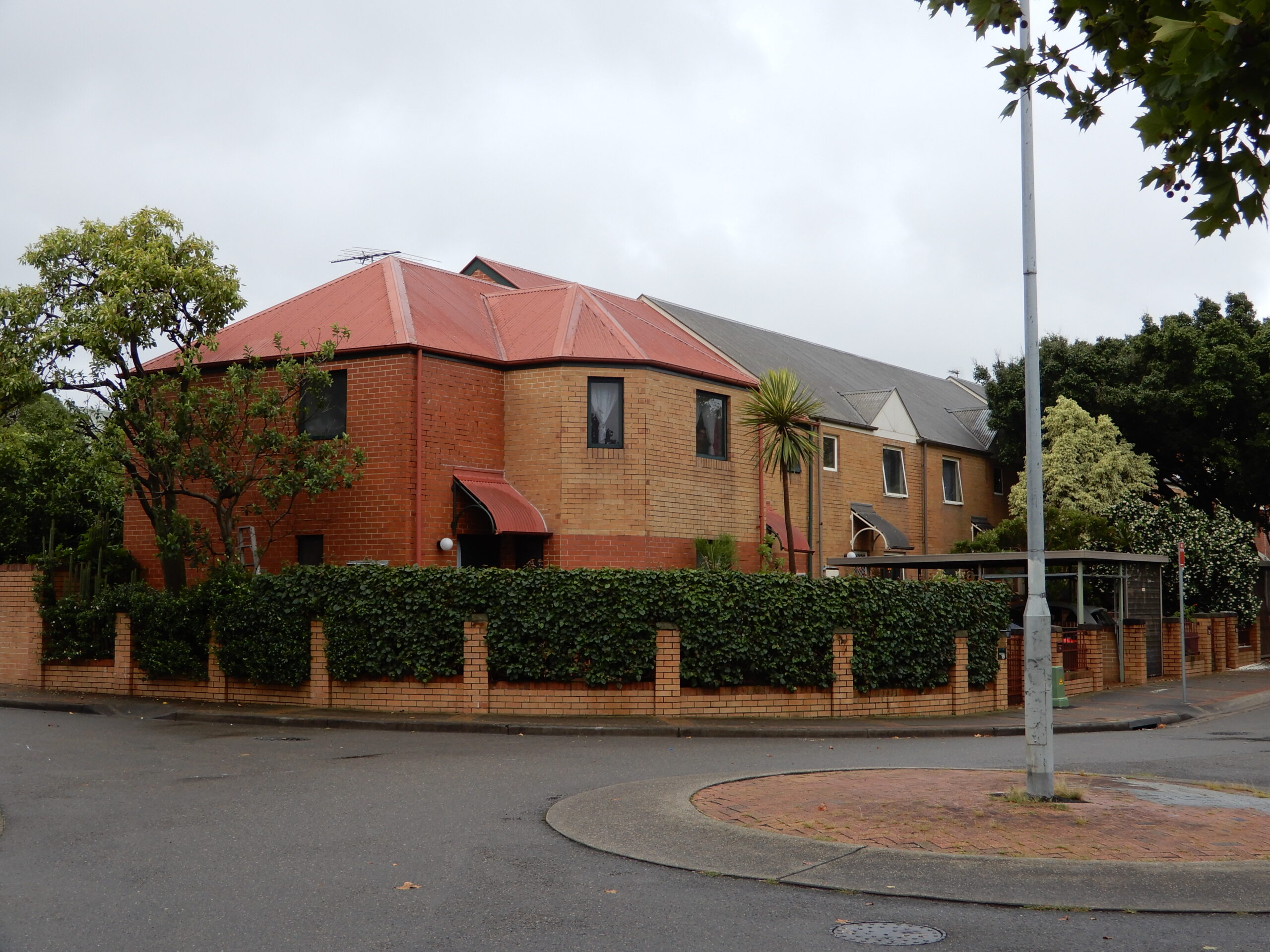
And lastly, Dr Sisson, you were at the protest at Explorer Street estate last Saturday. What’s the benefit of keeping these places public and not going forward with the redevelopments?
First of all, there’s little to suggest that these homes are in need of demolition. They were only built about 30 years ago and they could be repaired and renovated to a high standard. And as far as I understand, that’s what a lot of tenants want.
Also, you can’t actually solve the chronic need for public housing in this city by knocking down existing public housing and building a handful more properties that weren’t included in the first place.
The conservative number for the waiting list is 50,000. We need a minimum of 50,000 properties, and we’re not going to get anywhere close to that by knocking down 100 properties and building 120, or, as is the case in Waterloo, knocking down 2,000 properties and rebuilding 2,000.
This is not a realistic model for dealing with the need for public housing.
Obviously, it’s unjust and unfair for the tenants who are there and have no say in this process. As I said, it can be really traumatic and stressful for them.
We need to be retaining public lands as well, because we have a very scarce amount of public land now in Sydney.
The means to which we have democratic control and ownership over the city is based on how much of it we actually own. So, that’s another thing we need to be thinking about when talking about these projects.


